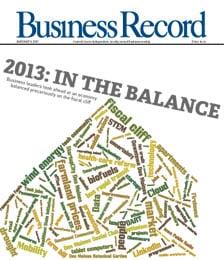Borrowers buy more time with restructuring
In an effort to avoid bigger loan losses and give borrowers more time to get back on their feet, an increasing number of U.S. banks are restructuring troubled commercial real estate loans.
The trend is emerging as a hurting commercial sector replaces problems associated with the residential housing crisis, MarketWatch reported.
But buying more time may not be enough.
“Asset quality appears to have stabilized, but we just don’t know the impact of all these restructured loans,” said Paul Miller, a banking analyst at FBR Capital Markets. “This could mean problems persist for longer than investors expect.”
The financial crisis stemming from the residential mortgage meltdown has left U.S. banks with billions of dollars worth of bad loans and troubled assets.
Now, commercial real estate vacancy rates, which are being fueled by rising unemployment and hampering the performance of income-generating properties, could contribute to the looming, yet uncertain, potential for banks to lose $200 billion to $300 billion in bad loans.
That’s according to a February report by the Congressional Oversight Panel (COP), a government watchdog group charged with providing oversight on the $700 billion Troubled Asset Relief Program.
“Regulators are concerned about a looming wave of maturing commercial real estate credit in 2010 and beyond,” said Todd Hagerman, a banking analyst at Collins Stewart. “To get ahead of that, they want banks to become more active on restructuring these loans now.”
He said successfully restructuring troubled loans helps banks, as they don’t have to set aside as many reserves on such assets.
“Some investors cry foul, arguing this is another version of ‘extend and pretend,'” Hagerman said. “But the economy is improving and this gives more time for borrowers to get back on their feet.”
The COP, citing data from New York-based research firm Real Capital Analytics, said more than $17 billion of nearly $140 billion of troubled commercial mortgage assets in the United States have been modified in some way.
“Lenders have an incentive to work with borrowers, where possible, to delay, minimize or avoid writing down the value of loans and assets,” the COP said. “The hope is that the economy will improve or that commercial real estate loans will not be as problematic as expected.”
However, the watchdog said, without a quick recovery in the commercial real estate market, loans may fall back into a nonperforming status.
“The redefault rate is very high, so we’re pretty cautious about the future performance of restructured loans,” said Fred Cannon, a banking analyst at Keefe, Bruyette & Woods. “Bankers try, and it’s worth making the effort, but it doesn’t always work out.”








